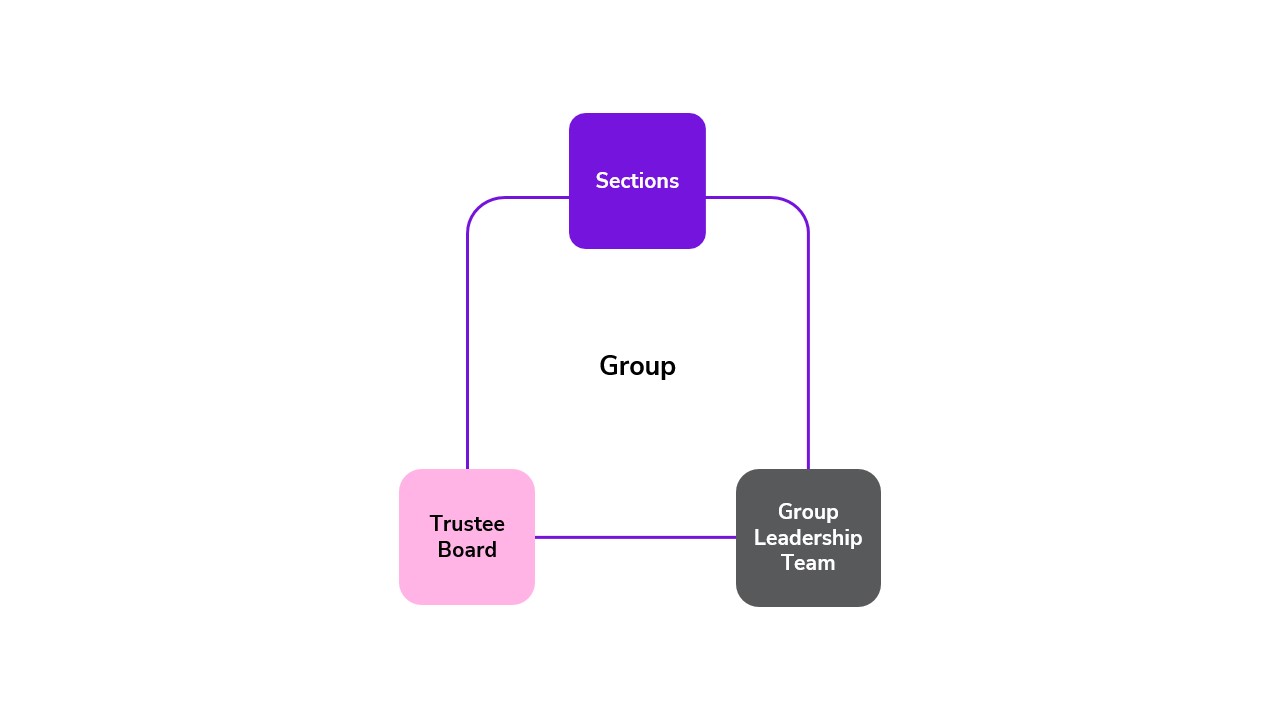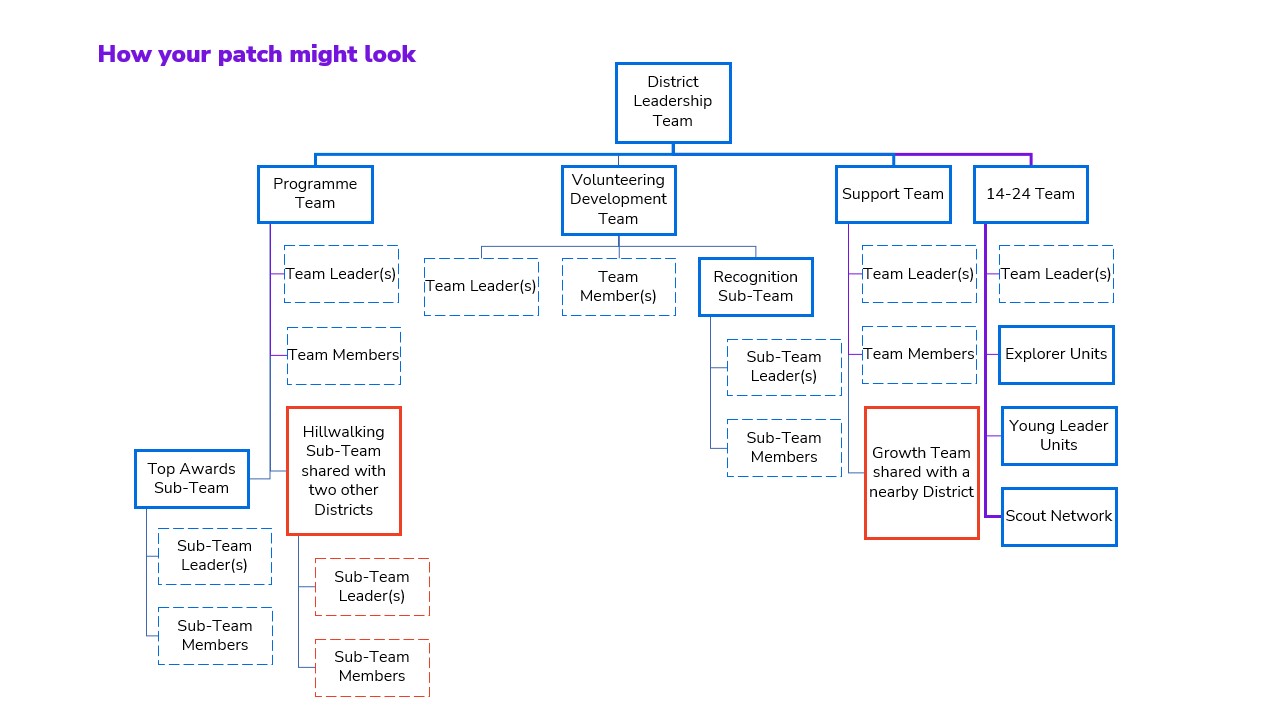Sub-teams
Understand how sub-teams can help to organise volunteers in a clear way
What are sub-teams?
Sub-teams are a great way of organising our amazing volunteers. These are teams of volunteers that sit within another team.
Examples:
- A Fundraising Team within a Group Leadership Team.
- A Hillwalking Team within the Programme Team.
They have a specific area of focus within the overall scope of that larger team.
Why we can have sub-teams
Within our new approach, we can use sub-teams to:
- Increase a sense of identity and belonging within our valued volunteers.
- Make better use of our volunteers' time and resources.
- Help make it clearer what people do, and what they’re responsible for. For example, you might set up a Climbing Team within the Programme Team. The volunteers in this team could be Climbing Team Leaders and Climbing Team Members.
- Make it easier to find and reach the right people on our digital system. For example, a Cub Section Team Member can find out who the District Hillwalking Team Leader is.
How we can use sub-teams
At Scouts, we volunteer in teams. Each has a team description, which outlines what they do. Every team can have Team Leaders and Team Members who volunteer flexibly, sharing out tasks in a way that works best for everyone.
Some teams are quite large, with multiple volunteers doing similar tasks. In these cases, it might be helpful to use sub-teams.
All teams (except Section Teams) can have their own sub-teams.
You can share sub-teams across Districts or Counties. And you can decide locally if sub-teams are needed, and what they’re called.
Sub-teams can be set-up at any time by the main team, so can be created if they are needed in the future.
Depending on how teams are set up, Scout Active Support Units may become sub-teams.
It's important to remember, sub-teams are optional.
Learning for sub-teams
All sub-team Leaders and sub-team members must complete:
- The learning everyone needs
Examples for Groups
Here's an example of a Group without sub-teams:

Here's an example of a Group that has not set up any sub-teams.
Groups may choose not to set up sub-teams for a number of reasons. They may be a smaller group that has fewer volunteers. Or they may not have the need for specific tasks. For example, if they rent venues, instead of owning their own building, they may not need to carry out meeting place maintenance.
The Group Leadership Team will carry out its tasks as outlined on the team description, including support and operational tasks, which may have previously been done by Executive Committees.
Here's an example of what a group might look like with sub-teams added within the Group Leadership Team:

Here's an example of a Group where the Group Leadership Team delegates some support and operational tasks to volunteers in sub-teams.
Meeting Place Team - looking after the Group's meeting place and camping equipment.
Admin Team - overseeing day-to-day finances, communications, and supporting with member administration so that young people and adults can move seamlessly through the Group.
Fundraising Team - engaging with the community, working with local businesses and other charities to secure fundraising and make the most of fundraising opportunities.
The Group Leadership Team remains overall responsible for the tasks that they delegate to the sub-teams, and they also carry out the remaining tasks on their team description.
Examples for Districts and Counties
Here are some examples of sub-teams that may be useful in your District or County:
Adventurous Activities Teams - Climbing, Paddle Sports, Hillwalking, Shooting, Archery.
Nights Away Team - helping our volunteers introduce Nights Away into their Section's programme, including assistance in gaining their permits.
Top Awards Team - supporting volunteers with any programme changes, such as new badges and activities, to help young people achieve Top Awards.
International Team - organising trips and activities.
Events Team – taking the lead in organising a large event.
Local programme delivery sub-teams - such as the Hospital Scouting Team, and the Section Badge Delivery Team.
Awards and Recognition Team - working to recognise and appreciate our volunteers for their brilliant work.
Learning Team - helping our volunteers with their learning.
Growth and New Provision Team - helping Scouts to grow locally.
Communications Team - working to engage with local media.
Community Engagement Team - cultivating our relationships with other organisations.
Property and Equipment Team - checking bookings and ongoing maintenance.
IT and Digital Team - supporting IT, website, social media, email and technical aspects of wider communications
What you can do now
- Start setting up and building your teams and using the new team descriptions.
- Think about whether sub-teams might be useful in your local area, and who might be in them.
